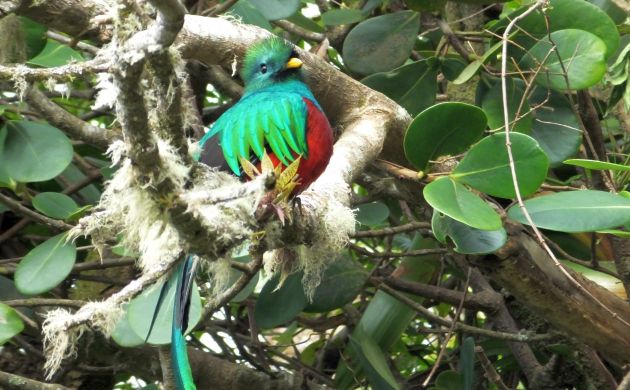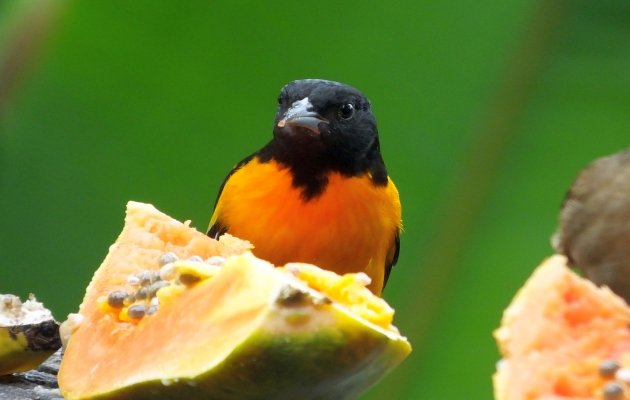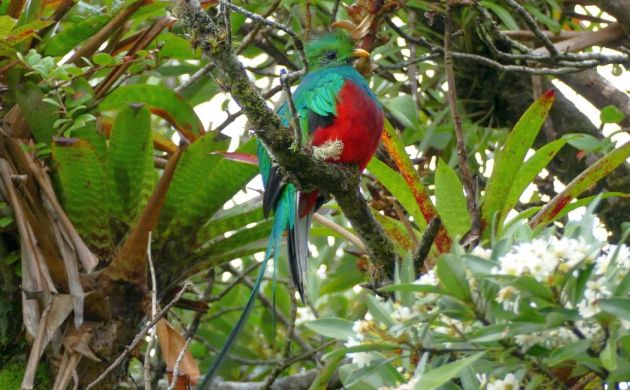
Cold is subjective. At least how a person feels about temperature. It’s true! I have heard many people in Costa Rica mention the freezing cold weather, or how cold it is….when it’s 65 degrees. If I had grown up only knowing warm, humid weather, I would feel the same.
But I didn’t grow up in the tropics. As much as I dig the biodiversity, experiencing the constant production and growth and profusion of life at all levels, I grew up in much colder places. Places with sweater weather in fall, places where we rejoiced when spring days became a balmy 60, places where the wind chill became so downright Arctic, it felt like it could snap your bones.
On those freezing, ice-cold days, I recall wondering what it might be like to live in the tropics, to live where it was always warm. After spending more than a dozen winters in tropical latitudes, I can now say that I know what it’s like and yeah, it’s pretty nice! I still appreciate the birds of the northern winter, I still appreciate crunching snow under boots and hearing the echoes of jays in the sleeping maples, but I’m also fine with seeing orioles and grosbeaks with rose-colored breasts in January.

If I miss the cold, I can also head into the mountains. They are just 45 minutes up the nearest road and during January, I can catch a hint of the cold that I remember. It’s not anywhere even near the bone-chilling grasp of the frost king, but it can certainly be cool enough for a fair jacket. That’s how it was the other day, while guiding during a cool, windy morning on Volcan Poas.
At around eight thousand feet (2,300 meters), Poas is high enough to give you a dash of cold and since the volcano tends to catch the wind, you will feel it. The birds also feel it and they tend to take shelter but the high mountain species are also used to it, they still call, they still come out to play, even quetzals!

The winds tried to automatically snatch away warmth but they couldn’t stop the Resplendent Quetzals from calling. I had heard one call up there a few days before but wasn’t sure if we would see any; finding quetzals on Poas is never guaranteed. I figured we might need to spend a fair deal of time listening and looking and maybe glimpsing one way down there in the forest. Birding luck was with us though because shortly after getting out of the car, there it was, the odd cackling vocalization of a quetzal!
We walked down the road to the spot where the mega trogon had been calling and lucky for us, it continued to call, occasionally singing. It wasn’t long before we realized that more than one bird was involved but we didn’t know how many until they finally rush into view. First, a male with its classic iridescent feathered train, then another, and then a female! How many quetzals were there?!

The wind breezed through the big old growth oaks and foliage of Lauraceous trees (the famed wild avocadoes that quetzals feed on) and all of the quetzals took flight. There was a flurry of flowing green and gold on patches of plush red velvet…we counted 5..there might have been one or two more!
They didn’t stay long, preferring the deeper vegetation, they melted back into the bromeliads. I can’t blame them, if I could stay far from the road, I would do the same. The cold wind still blew but if I felt it at all, it would have been a summer breeze; there’s nothing like a quetzal show to light the inner birding fires.













Very evocative! As we in the northeastern USA are hunkering down under the coldest weather of the winter so far, it’s wonderful to remember the Quetzals in the cool mountain forests of Costa Rica.
i am visiting monteverde mid january and i really wanted t osee resplendant quetzels but now hear they can only be seen from mid february.Is that right? would they not be visible in january?